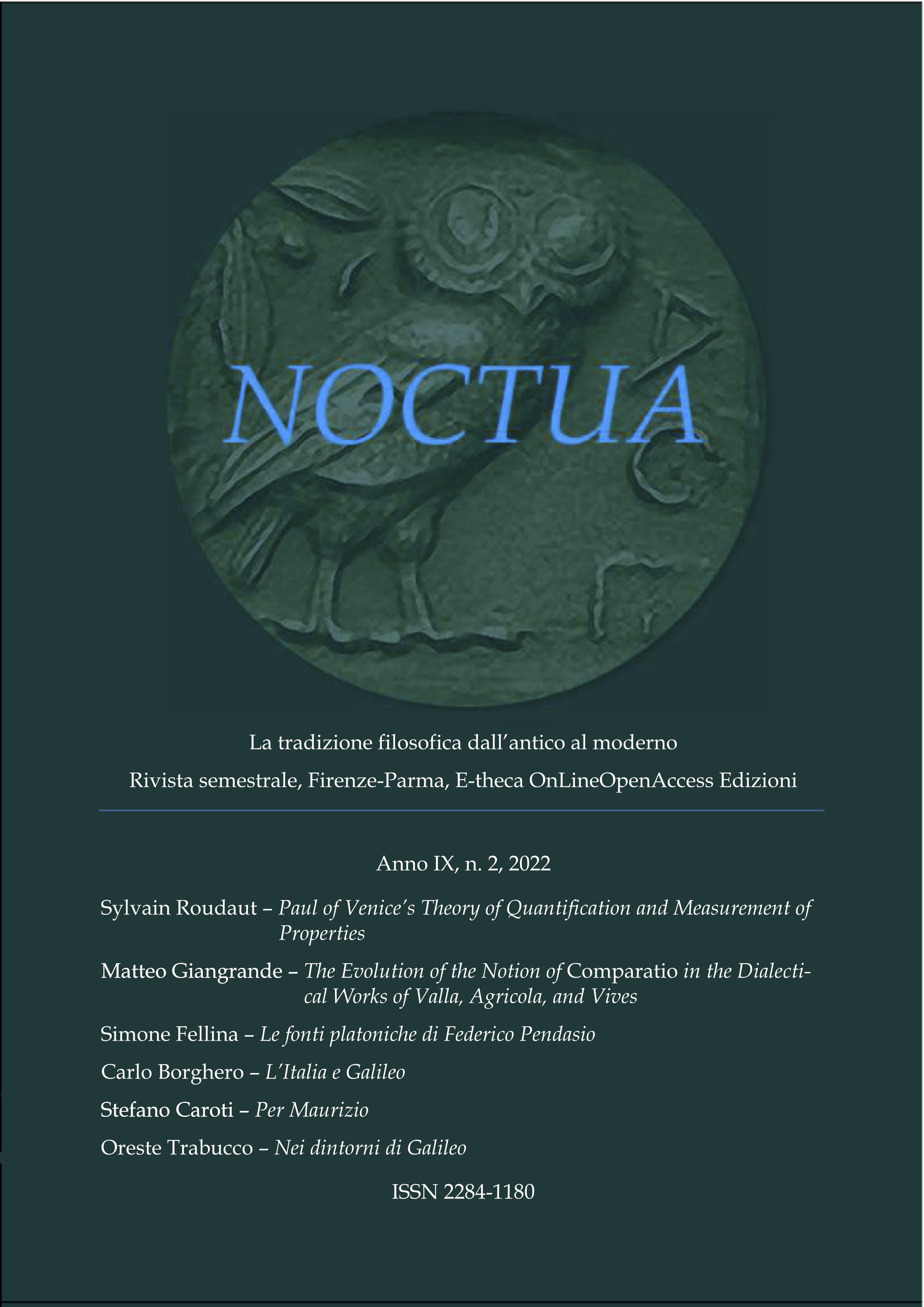Paul of Venice’s Theory of Quantification and Measurement of Properties
DOI:
https://doi.org/10.14640/NoctuaIX5Parole chiave:
Paul of Venice, Oxford Calculators, motion, speed, intension of formsAbstract
This paper analyzes Paul of Venice’s theory of measurement of natural properties and changes. The main sections of the paper correspond to Paul’s analysis of the three types of accidental changes (local motion: section II; augmentation: section III; alteration and qualities: section IV), for which the Augustinian philosopher sought to provide rules of measurement. It appears that Paul achieved an original synthesis borrowing from both Parisian (Albert of Saxony in particular) and Oxfordian sources (especially Richard Swineshead). It is also argued that, on top of this theoretical synthesis, Paul managed to elaborate a quite original theory of intensive properties that marks him out not only from the nominalist framework of his Parisian sources but also from the usual realist treatments of the problem. Finally, it is shown that, to a certain extent, Paul undertook to apply the mathematical and logical tools inherited from the Calculatores tradition to empirical problems of natural philosophy, leading to reevaluate his role in the evolution of scientific thought in early 15th-century Italy (section V).
##submission.downloads##
Pubblicato
Fascicolo
Sezione
Licenza
Noctua pubblica contributi Diamond Open Access secondo i termini della licenza CC BY / Noctua publishes Diamond Open Access contributions under the terms of the CC BY license.







